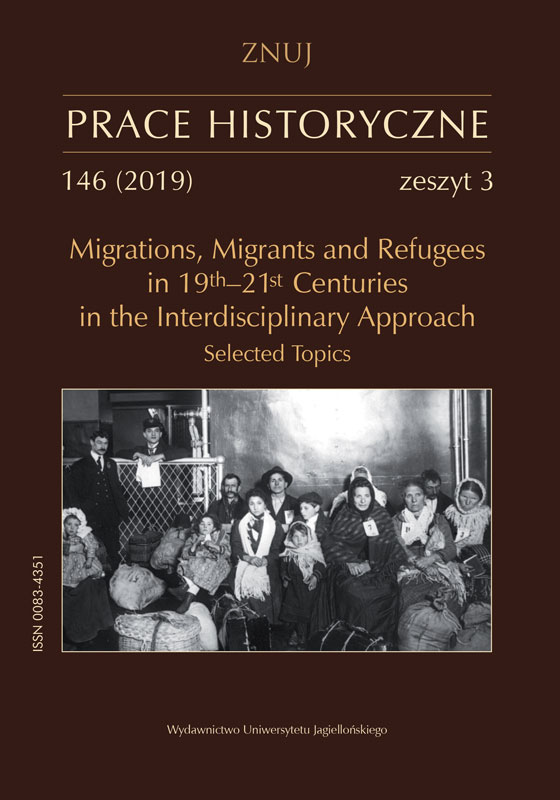Polish Child Migrants – Psychological Perspective
Polish Child Migrants – Psychological Perspective
Author(s): Paulina SzydłowskaSubject(s): History
Published by: Wydawnictwo Uniwersytetu Jagiellońskiego
Keywords: migration; children; acculturation; adolescents; discrimination
Summary/Abstract: According to the Instituto Nacional de Estadistica, as of January 2017, there were 52.893 Polish people residing in Spain. Even though the Polish minority has been present in Spain since the 16th century, the community started to grow in the 1980s due to the infl ux of economic immigrants. In 2004, there were more than 800 children who had at least one parent of Polish origin. It can be said that those children belong to the second generation of Polish migrants. The Relative Acculturation Extended Model (RAEM) has been adapted to measure the acculturation of children and adolescents. It assumes that people undertake diff erent acculturation strategies in diff erent spheres of life. These spheres were divided into central and peripheral. This model also allows to distinguish real and ideal plane of acculturation. The comparative studies (Lopez-Rodriguez et al., 2014) conducted with a group of young people in Spain and Italy show that children and adolescents prefer to preserve their own culture in the central spheres, while adapting the culture of the host country in the peripheral spheres. The main research question of my paper is: What strategies of cultural adaptation according to the RAEM Model undertaken in peripheral spheres do children and youth of Polish origin mention in their narrations? Twelve people participated in the pilot study. One subgroup consisted of fi ve children aged 10 to 15, who attend classes in a Polish school. Their parents constituted another subgroup. Four children had both parents of Polish descent, one child came from a mixed-race family: Spanish-Polish. As part of the study, 11 semi-in-depth interviews were conducted. The starting point of each conversation was a set list of questions based on the RAEM model, which each researcher could develop depending on the threads introduced by the examined person. The qualitative data collected in the pilot study of this group of Polish child immigrants show some preliminary results. It is diffi cult to assess the strategies undertaken by teenage immigrants in particular spheres. Firstly, the narrations of children about the adaptation strategies partly coincided with the Spanish-Italian quantitative ones, saying that in the peripheral spheres children adopt the culture of the host country. On the other hand, the behaviors described by young people can be understood as undertaking integration strategies because they go to Spanish schools and take part in Polish ‘Saturday’ classes, and maintain contact with both Spanish people and the Poles who live in Poland. In the sphere of peer relations, children narrate the diff erences between the real and the ideal planes. In the real plane, children say that they do not keep in touch with children from Polish ¨Saturday¨ schools outside the school building, but in the ideal plane, they would like to be able to meet with them outside the school context. Parents and their acculturation strategies may have an impact on children’s behaviors. To test this, in further studies, the acculturation strategies undertaken by parents should be additionally covered. Moreover, the factors which aff ect the undertaking of particular integration strategies should be found.
Journal: Prace Historyczne
- Issue Year: 146/2019
- Issue No: 3
- Page Range: 649-665
- Page Count: 17
- Language: English

